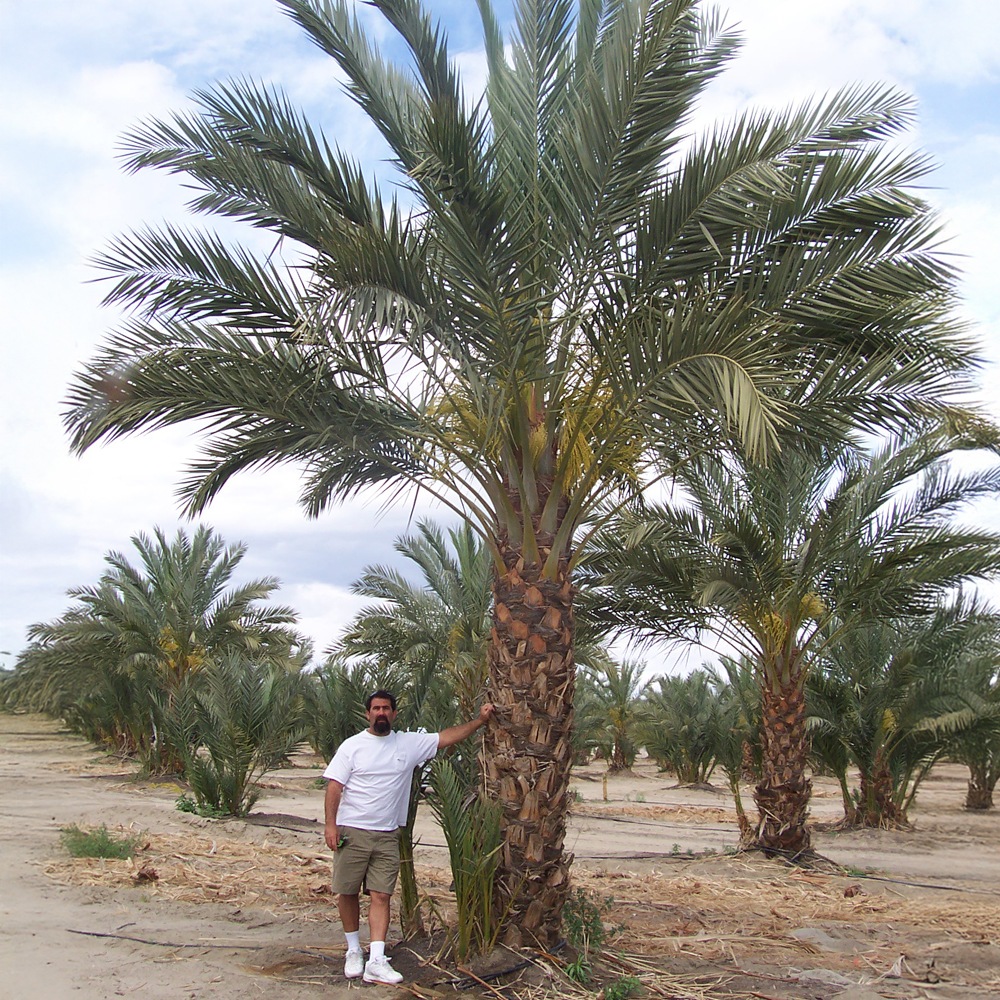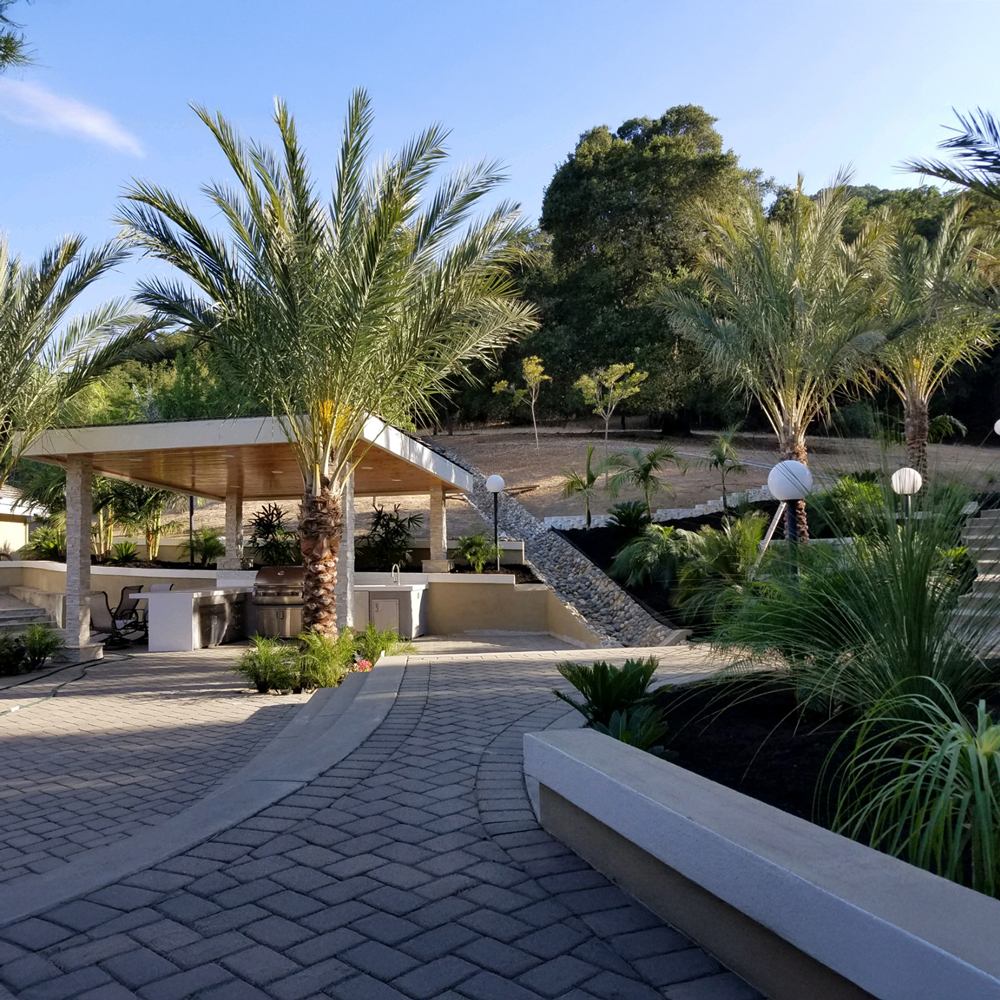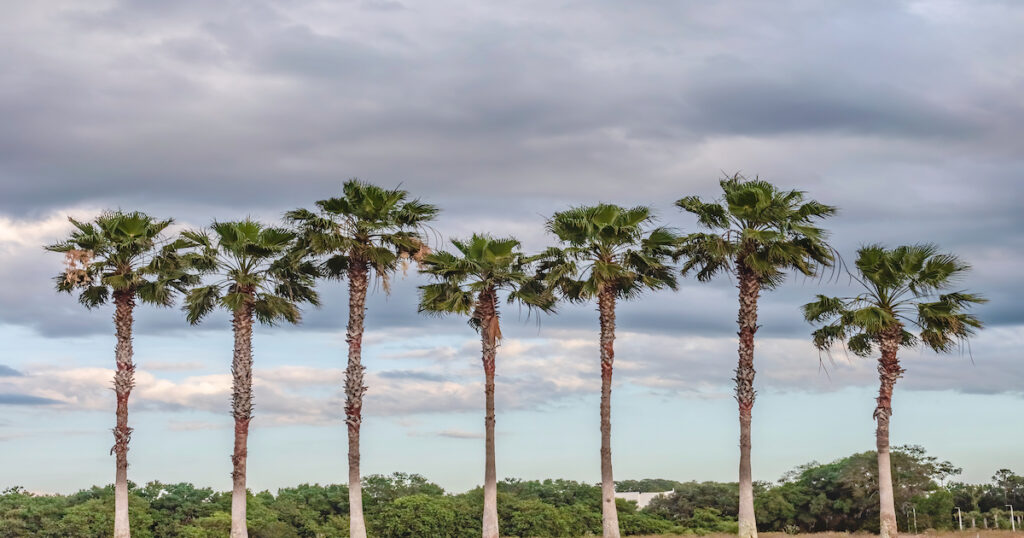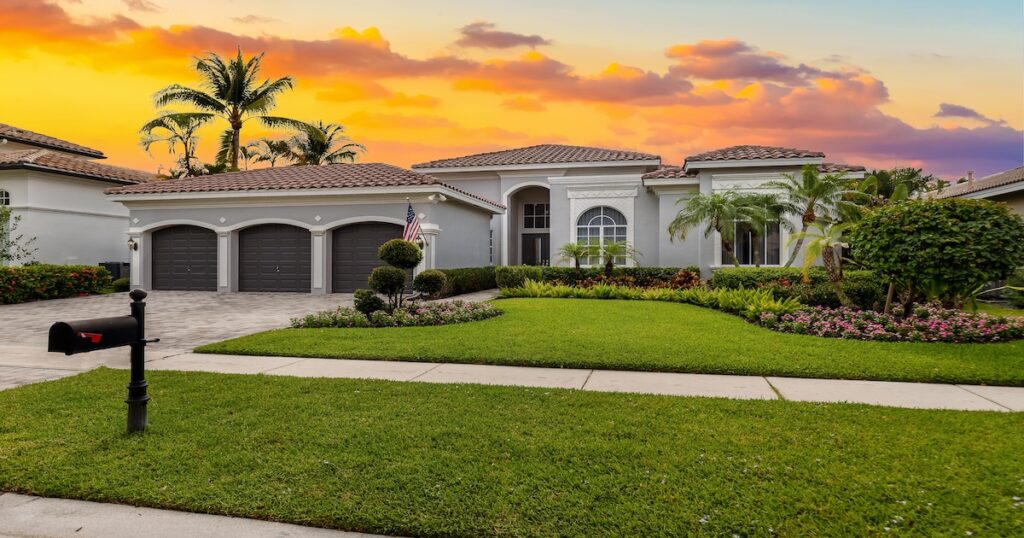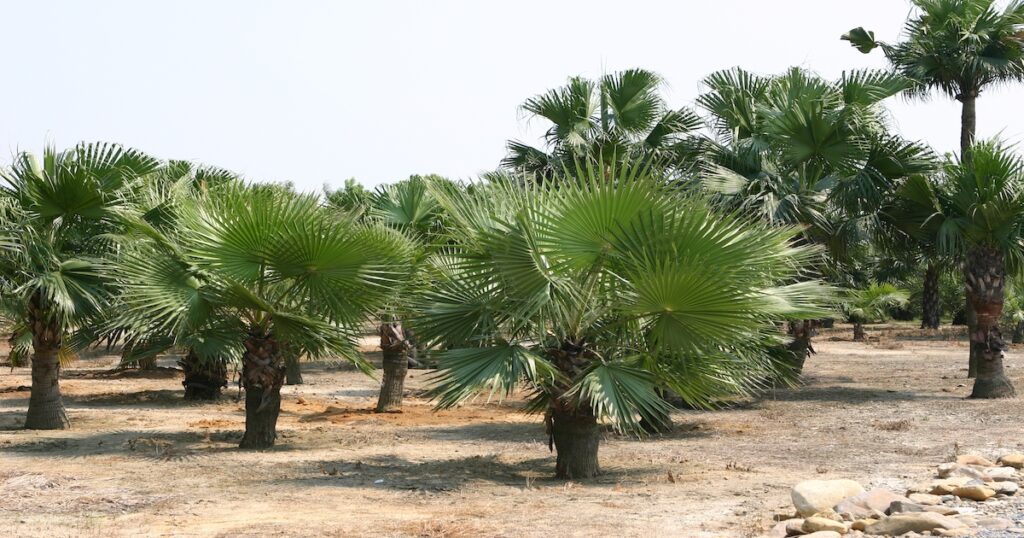Where Do Medjool Date Palms Thrive?
As the cold hardiest of the date palm varieties, the Medjool Date Palm can be planted and thrive from California to Arizona and Nevada, to New Mexico, from Florida to Texas, to Louisiana, and even in states as east as South Carolina. In addition, because the Medjool Date Palm is extremely saltwater tolerant, this palm is typically the top choice for use near pools, homes, hotels, and near beaches.
Medjool Date Palms are Perfect Landscaping Beauties
Medjool Date Palms are being widely planted today for their tropical landscape appeal. These regal date palms have become a very popular choice for both residential and commercial landscape designs. Due to the hardiness of these palms and due to their natural grace and beauty, Medjool Date Palms are often used for landscaping and property design—bringing a tropical vibe to any property.
For those looking to take their residential or commercial properties to the next level, opt in for our “Diamond Cut.” Before delivery, the trunks of the palms will be given a diamond cut to improve the aesthetics and provide texture. Of course, you can choose to keep your palms in their original condition as well.
The Medjool Palm’s striking regal appearance, natural beauty, and easy maintenance make these palms a prime choice for those seeking to improve the look of their property.
Foliage
The Medjool Date Palm’s leaflets are categorized as evergreen monocots, leaving them green year-round. The leaves are 13-20 feet long, and the leaflets, which form a “V” shape down the stem (also known as the rachis), reach about one to two feet long. Typically, there are about 150 leaflets per leaf.
The petiole, which is the stem that attaches the leaf to the trunk, is considered “false” because it contains 3 to 4-inch thorns that are actually modified leaflets. While most commercial growers remove spines when harvesting, it is important to use extreme caution when handling this area of the palm.
